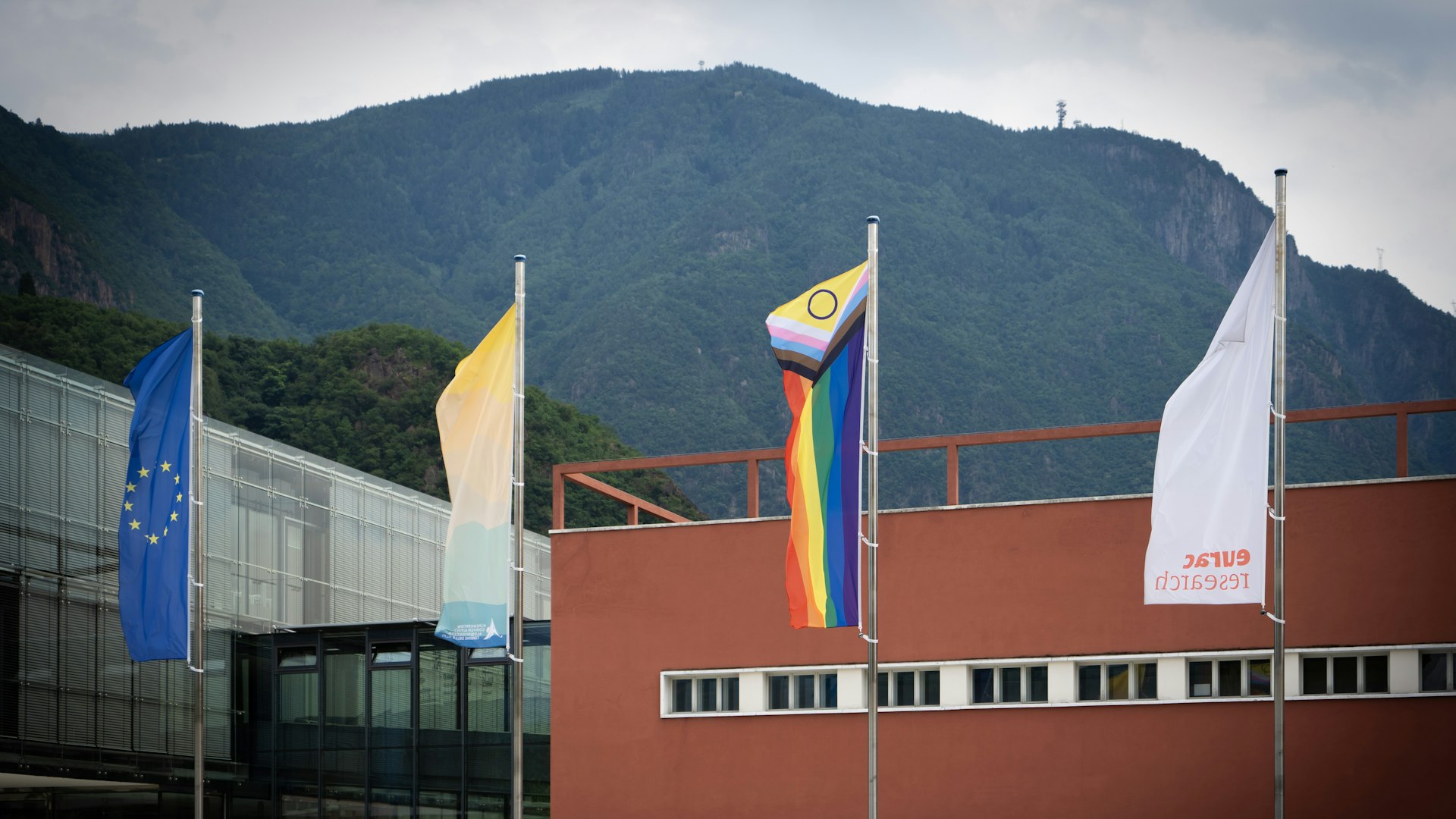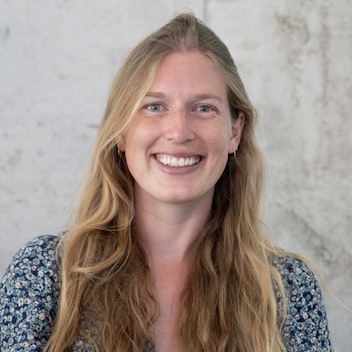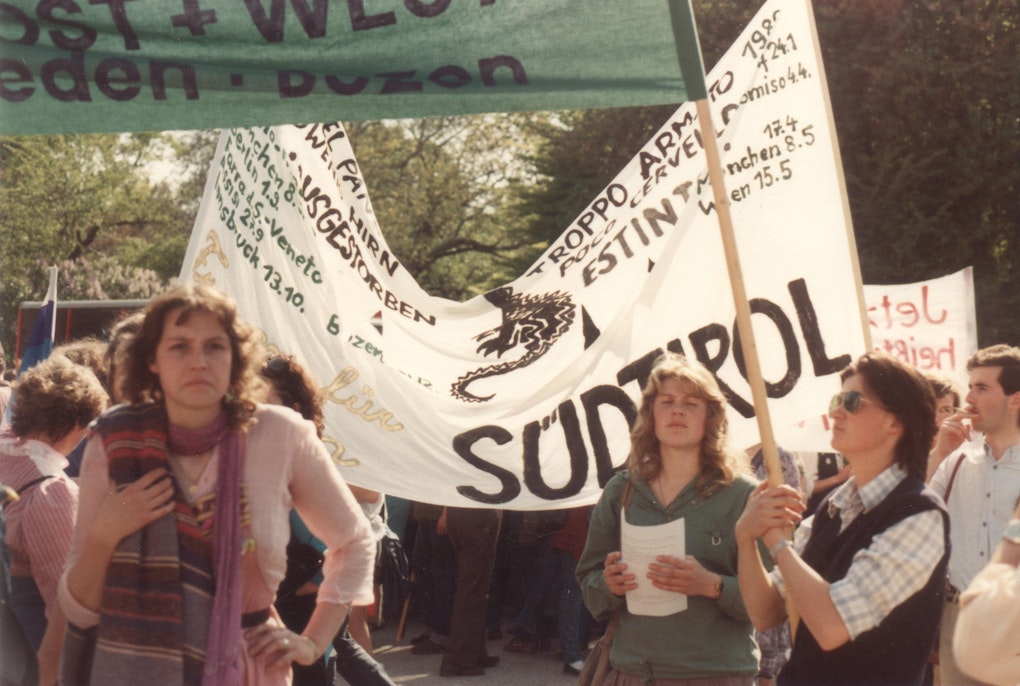Alexandra Tomaselli, a social lawyer, and Katharina Crepaz and Mirjam Gruber, two political scientists, are spokespersons for an interdisciplinary working group at Eurac Research which studies gender dynamics. We talked to the three of them about the most important stages of Gay Pride, the topics of intersectionality and pink washing, and what else they are up to with their working group.
Pride is a word often used in populist and nationalist rhetoric. Those who chose the name Pride Day must have been aware...
Alexandra Tomaselli: The first protest march took place on June 28, 1970 and is known as the “Christopher Street Liberation Day March.” According to various sources, activist Craig Schoonmaker, along with others, proposed the name “Gay Power” originally. However, with only a very small percentage of the homosexual population actually in power, they decided on “Gay Pride” as the activists wanted to give the negatively connoted term “gay”, a new and positive meaning, something to be proud of.
Mirjam Gruber: More recently, movements against sexual discrimination have taken up the populist rhetoric of pride and turned its message on its head. In June 2020, for example, the hashtag #ProudBoys – a term coined by the white supremacist group of the same name in the U.S. to spread hate speech – was instead used to promote equality by flooding social media with photos of gay couples kissing and funny memes.
The beginnings
On the night of Friday, June 27, to Saturday, June 28, 1969, police raided the Stonewall Inn, a gay bar in New York's Greenwich Village neighbourhood. Riots and protests ensued that lasted several days and are considered the beginning of all subsequent worldwide public initiatives for equal rights for homosexuals and trans people: Gay Pride, Pride Day, Pride Month, etc.
The most important events: Pride Day on June 28 and Day Against Homophobia, Transphobia and Biphobia on May 17.
From the first marches for gay rights to the LGBTIAQ+ movements: when and why did the acronym expand and what does the + stand for?
Tomaselli: The acronym stands for lesbian, gay, bisexual, transgender, intersex, asexual, queer, and has expanded to include more and more categories. The + at the end indicates that there can be other gender identities that do not yet have a name or do not want to have a name, but that have just as much a right to exist. However, it is also important to highlight that there are various asymmetries within the movement. Some minorities, such as transgender or asexual people, often complain of being excluded from the community.
Katharina Crepaz: A clear indication of this is the fact that the T for transgender was added only in the 1990s, although transgender people were very active in the protests from the beginning. Even within a movement that fights for inclusion, there are particularly marginalized groups that experience social rejection to an even greater extent.
“The principle of intersectionality is to show solidarity with other causes in order to pool resources against social injustice.”
Katharina Crepaz
What are the group’s relationships with other movements that work to protect other communities, such as Black Lives Matter?
Crepaz: There are movements that become so radicalized for one cause that they exclude others, for example TERF – the Trans-Exclusionary Radical Feminism movement. This extreme form of feminism does not recognize transgender women. Older feminists from the Second Wave of the women's movement make up a significant part of this group. In most cases, collaboration between marginalized groups, such as with Black Lives Matter, works. In the Fourth Wave of the women's movement (see box), it is one of the tenets of the movement to give more weight to demands for equality.
Gruber: In the United States, cooperation between various movements has led, for example, to the “Say Her Name” initiative. This aims to protect not just women, but Black women, from police violence. The principle of intersectionality is to show solidarity with other causes in order to pool resources against social injustice.
The four waves of the women's movement and intersectionality
The 1st wave took place between the end of the 19th century and the first decades of the 20th century and was characterized by demands for access to higher education and voting rights.
The 2nd wave happened between the 1960s and 1970s. The right to physical self-determination as well as an active voice in politics, unrestricted access to skilled jobs underpinned the movement. This group employed the slogan: The personal is political.
The 3rd in the 1990s was typified by the internationalization of the movement. And came with the inclusion of demands from the Global South. In 1989, the African American feminist lawyer Kimberlé Crenshaw defined the concept of “intersectionality” to mean a combination of different dimensions of diversity such as gender or sexual orientation, skin color, disabilities, different religious affiliations, poverty, etc. These groups can be simultaneously exposed to multiple forms of discrimination.
Since 2012, the 4th wave has sought further internationalization through social media. Bodily integrity and self-determination in sexual orientation, against sexualized violence and abuse of power, against homophobia and transphobia are the tenets of the 4th wave. Slogans: #MeToo, #NotOneLess, #OneOfUs
How do anger and dialogue underly activism?
Gruber: Both are fundamental elements for advancing movements. However, they have a different weight depending on the context. Black Lives Matter has a very different status in the U.S. than in Europe, and the same is true in countries where those who protest for their rights risk their lives.
Crepaz: In the West, LGBT and feminist movements have largely relied on dialogue, even though perceptions of injustice and the anger it triggers are important drivers of social movements. I think it's understandable that people don't want to talk to certain people anymore when restrictions are placed on them regarding their own bodies or their love for another person.
“Pink washing is a marketing strategy in which businesses or service providers identify with the LGBTIAQ+ community – for example, by displaying the rainbow flag, displaying their logo during Pride Month, etc. – in order to expand their customer base.”
Alexandra Tomaselli
Tomaselli: There has always been an exuberant and life-affirming attitude in the LGBTIAQ+ community. Recently, however, there has been some disagreement. For example, some accept pink washing because it gives them more visibility. Pink washing is a marketing strategy in which businesses or service providers identify with the LGBTIAQ+ community - for example, by displaying the rainbow flag, displaying their logo during Pride Month, etc. - in order to expand their customer base. For example, a Spanish airline is offering discounts in June for those who come out as LGBT. Then there are other individuals from that community who would like to go back to the origins, to the marches in the 1970s to commemorate those who were harassed by the police when they protested.
“Younger generations often take action earlier than other age groups.”
Mirjam Gruber
In the West, the younger generation seems to have less issues with gender identity and sexual orientation. They seem more open and inclusive, or is gender also a fad?
Gruber: I do have the impression that many people are more committed to the rights of the LGBTIAQ+ community today than they were 15 years ago. But the younger generation often mobilizes faster than any other age group. However, I wouldn't call the topic of gender a fad, but rather an essential component towards an inclusive and just society, because equality for all people is always a win-win situation. We will have achieved it - at least as far as sexual orientation is concerned - when the LGBTIAQ+ movement becomes obsolete.
Tomaselli:Maybe exclusions like disability, age, or poverty don't affect us personally, and we can ignore them, but each of us has a gender. And even I, as a cis female (a naturally born woman whose psychological gender identity is socially female also, ed. note), have to deal with my gender identity every day when I go shopping, visit a hairdresser, or fill out a form in an office. Gender concerns everyone.
Crepaz: The idea that more and more people are becoming homosexual or questioning their identity as a result of the LGBTIAQ+ movements is an interpretation often held by the far right. The reality is different. I like to draw a parallel with what happened to left-handed people. When they were no longer retrained to use their right hand and could finally write and work with their left, the number of left-handed people increased drastically. Of course, this was not because little girls and boys who preferred the right hand started using the left hand, but simply because the removal of stigma meant that everyone who finally felt legitimized to be who they are could come out in the open. It's a question of visibility.
A Gender Report for South Tyrol
In March 2022, in an informal email exchange, a few women researchers noted that Eurac Research was conducting a whole series of studies that were multi-, trans-, and interdisciplinary on gender dynamics: from linguistics to hate and violence on the Internet, women's political participation, the gender gap in the workplace, and energy poverty. Over time, the circle has expanded to about forty researchers.
Currently, the interdisciplinary team is working on a gender report for South Tyrol.
On the one hand, the goal is to network and consolidate existing initiatives promoted not only by Eurac Research, but also by the Council for Equal Opportunities, by municipalities (the municipality of Merano launched the first action plan for equality in all of Italy), by centers for combating violence, by universities, and by various NGOs. On the other hand, the group wants to raise awareness of the issue, also among men, who struggle no less than women with limiting stereotypes such as the provider myth or machismo and expectations of masculinity.
Katharina Crepaz
Katharina Crepaz, political scientist and health scientist. In addition to her research on minorities and intersectionality at Eurac Research, she teaches gender, diversity and health sciences at the Technical University of Munich.
Mirjam Gruber
Mirjam Gruber, political scientist. She has been devoting herself to research on discourses around the climate crisis for a number of years, where she is repeatedly confronted with gender aspects.
Alexandra Tomaselli
Alexandra Tomaselli, social lawyer. After working for many years on the rights of minorities and indigenous peoples, she now extended her research on the intersection of gender diversity and social inequality.






